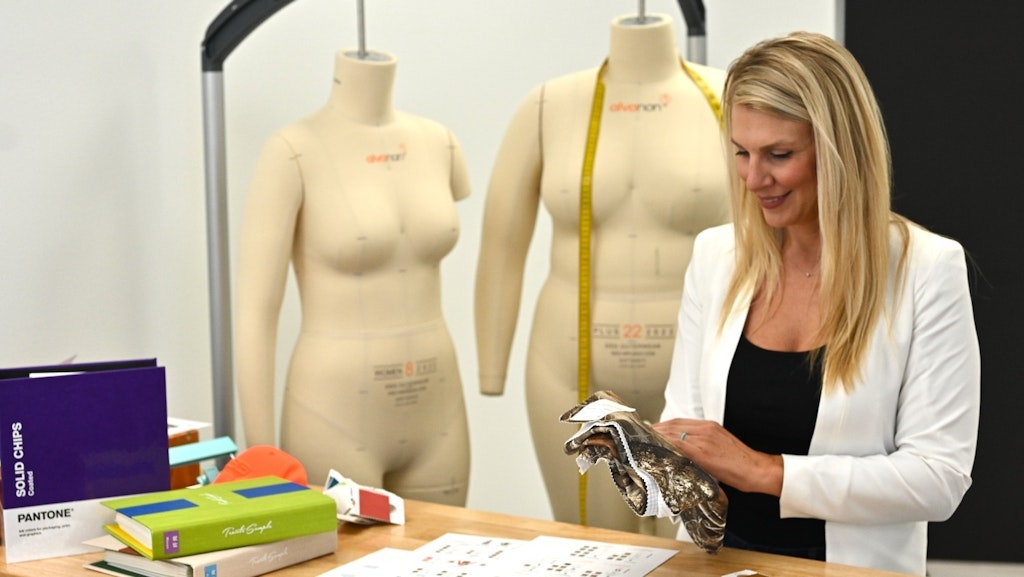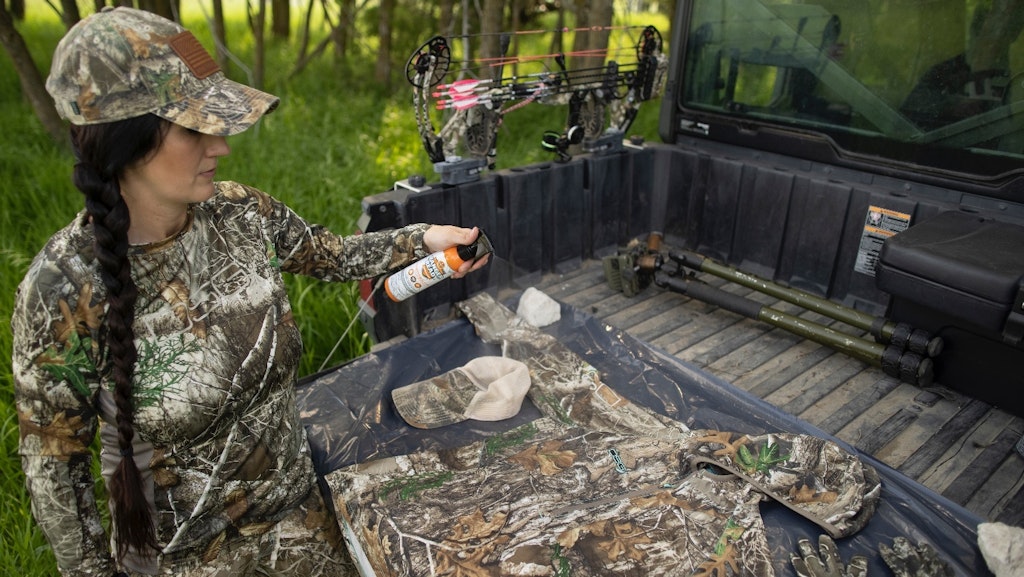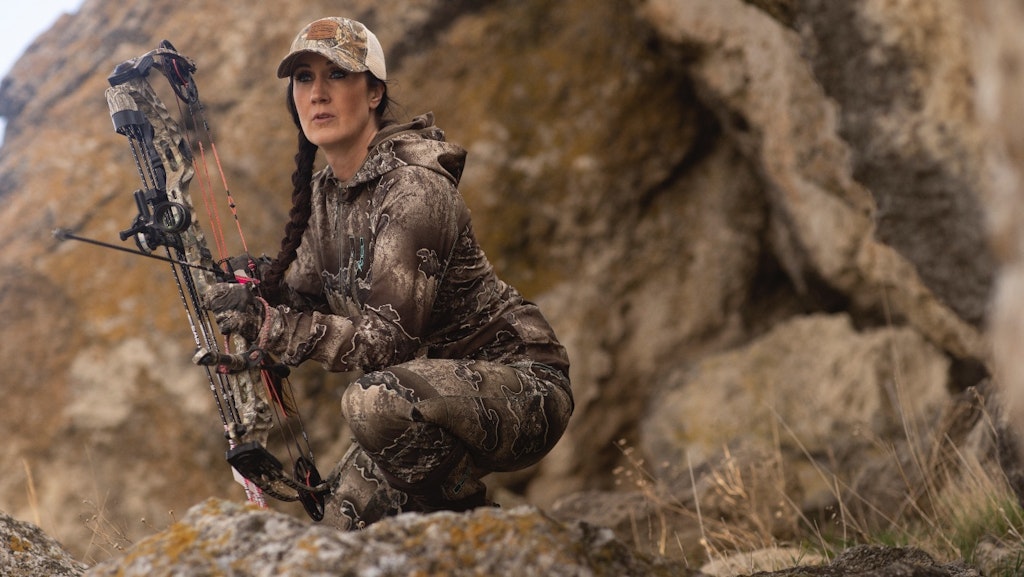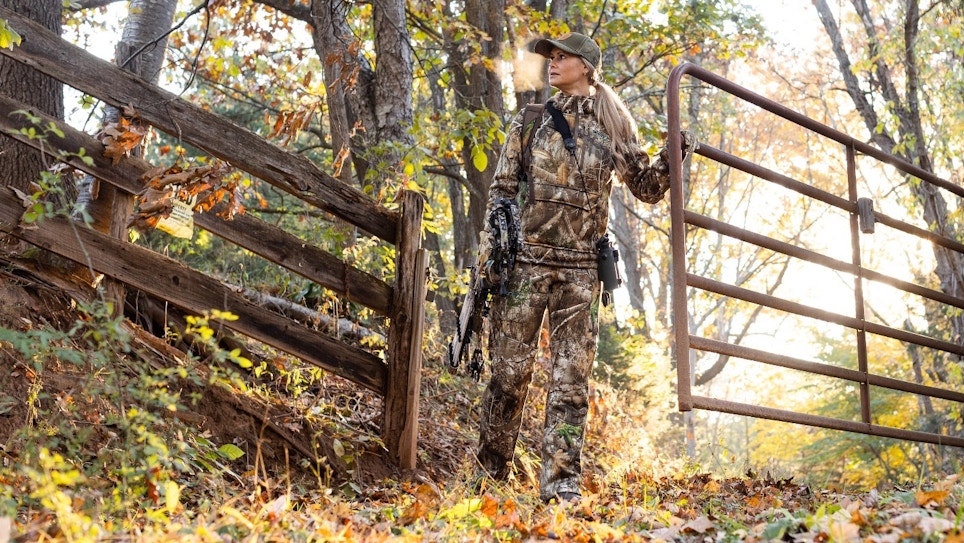You are probably already aware that women make up the largest growth segment in hunting and firearm sales. They are also the major influencers on our children and the next generation of outdoorsmen and women. Why, then, is it so difficult for women to find hunting apparel in retail shops that fits their shapes and needs? The answer appears simple. Women are still such a small segment of the population that catering to them may seem counterintuitive.
Consider, however, that 20% of firearms hunters in 2022 were women, according to the National Sporting Goods Association. And look at the associated numbers of female participation in partner activities (see sidebar). The numbers soar.
So, stocking a lineup of women’s apparel could increase your apparel sales exponentially and bring in a whole new customer segment that also buys guns, ammo and accessories for themselves and their families.
Sounds simple, right? Not so fast. The world of women’s hunting apparel has evolved, but many women are still wearing men’s clothing. Why?
They say they:
- Look for women’s clothing in local shops, but can’t find choices
- Realize many women’s lines are nothing more than relabeled or slightly reworked men’s designs
- Discover offerings for gals don’t have the technical and performance features found in men’s lines
- Find racks stocked with sizes that don’t fit
Don’t despair. These four challenges give you a starting point for identifying what women want: Apparel that’s made for their bodies and offers the features available in men’s styles.
“When you offer solutions, the challenges also set up your blueprint for success,” admits Wendy Gavinski, who launched DSG Outerwear (DSG), a female-focused outdoor apparel company, in 2010.
DSG stands for Doing Something Great, and that’s exactly what Gavinski has done. Her company is thriving and offers women who enjoy a wide variety of outdoor sports, including hunting, access to products that enhance comfort, enjoyment and in-the-field success.
“Set yourself up for success by incorporating these simple solutions to better serve women, bring them and their families into your shop, build a new customer base, and contribute toward the Big Picture,” Gavinski adds.
- Make your shop the home to sportswomen in your area. This requires more than just stocking an apparel line. Find ways to connect with women and their families. Develop a marketing plan to reach women. Most importantly, be cognizant of what Gavinski calls the Big Picture, which is understanding the power women hold financially, within the family, as overseers of most family activities, and over the growth and future of the hunting industry. Connect with a few local or regional influencers to help you promote, educate and pull women into the shop. Engage a great lady hunting guide, a formidable turkey caller, a few up-and-coming shooters/hunters, the coach of the local girls’ shooting team, or a fitness guru who also hunts to join you, help tell your story, and introduce products to gals. Hold ladies’ events to draw women into the shop to see your offerings. There are so many options: a hunting apparel fashion show; a sip-and-try (beverages/apparel) evening where gals can enjoy some camaraderie and touch, try on, and learn about apparel offerings; a family night at the shop to get the whole gang in for some fun; and/or partner with organizations already reaching women and holding events, such as Becoming an Outdoors Woman, the National Wild Turkey Federation’s Women in the Outdoors program, or Babes With Bullets, which offers exciting and fun firearms instruction for gals. When your shop is the only diamond in the pile of coal, women will be drawn to you.
- Select products made for women specifically. The National Center of Health Statistics of the Centers for Disease Control reports the measured average height, weight, and waist circumference for adults aged 20 and over. The average woman is 63.5 inches tall, weighs 170.8 pounds, and has a waist circumference of 38.7 inches.
While men’s torsos will tend to be largely straight from top to bottom, women will have narrower waistlines compared to the rest of their torsos, wider hips, and bustlines. How can they possibly wear the same clothing? Manufacturers who simply take their men’s lines and size them down are majorly missing the mark by ignoring the (rather obvious) differences in proportion between body types.

3. Consider manufacturers who focus on features and technology. These pieces are often more expensive than basic pieces, but the women we talked to want technology in their apparel. This isn’t to say you can’t offer more economical choices, as some women prefer to start buying less expensive gear and move up the technology ladder over time.
4. Pay attention to the 36–24–36 inches designation, which frequently has been given as the hourglass proportions for women since at least the 1960s, and touted as an ideal. The key is the hourglass, not the size. Most American women don’t come close to fitting this model, which is approximately a size 4-6. Sixty-eight percent of U.S. women are a size 14 or larger. The average American woman is now a size 16. Perhaps that average falls to a size 12 to 14 among more active women, but the point is, tiny sizes are not the bulk of the market. Those extra small, small, and even medium sizes can end up hanging on racks. DSG offers sizes from XXS to 5XL, so fitting the larger segment is easy.
In addition, Gavinski suggests retailers work with suppliers with complete lines of women’s apparel and accessories, which simplifies the purchasing process, allows staff to fully learn the selling points across the line, and offers women all the apparel items they’re looking for from base layers to outerwear, hats and gloves.
“It’s also important to find apparel companies that offer retailers support,” Gavinski says. “We want to be a partner to our retailers. We know the space can feel difficult to navigate, so we look for ways to ensure retailer success. That’s why DSG offers a starter package for shops that provides a full lineup of products and most importantly, a retail display, for a modest investment of $4,000.
“I can’t overstate the importance of displays when selling to women,” Gavinski adds. “Marketing to women goes far beyond simply stocking products. We can’t continue to treat them as invisible. When a gal walks into a shop, if she can’t immediately visualize products focused on her, she’s most likely out of there quickly.
“Focused displays help you show the products in a way that allows women to immediately identify you as female-friendly and -focused. Further, women can easily find the products because they’re not simply scattered among the men’s apparel. I can’t over-emphasize the importance of this one, simple step by retailers.”
Beyond providing the display, DSG also offers a no-minimum order policy, in-store signage, product training, drop-shipping of special orders to the customer or shop, access to DSG’s influencer partners who can come to your shop to make a presentation or introduce the products at a ladies event, apparel for female shop employees to help women visualize your offerings, help with ladies events, and more.
Whether you’re deciding to implement a women’s apparel section or updating current selections, Gavinski and the women we spoke to outlined what women look for when buying hunting clothes. All said, “Details matter.”
Technical Advancements: Although technology often means higher prices, avid hunters are looking for performance that supports success in the field. Look for lines that give gals the biggest bang for their buck, whether top-end selections or those of modest price.
Fit: Fit isn’t just size; it’s the features incorporated that work for a woman’s body. Here are a few details to look for when selecting women’s apparel:
- Shorter shoulder-to-waist length and a tapered waist or even torso area in tops (shirts, jackets, vests)
- Gusseted underarms and pleated back yokes that provide more arm and shoulder mobility, especially for larger-busted gals
- Darted chest to accommodate bustlines
- Extended shirttails that stay tucked into pants
- Smaller waist sizes with a wider fit through the hips
- Belt loops
- Heavy-duty, two-way zippers, which provide enhanced mobility and comfort
- Adjustable waist, wrist and leg tabs, Velcro, or snaps, which allow for a personalized fit.
Comfort: All hunters are looking for comfort in apparel, and fit is the initial key. However, fabrics are another comfort element that should be considered. Include layering choices from wicking to outerwear.
Weather Protection: Match your local weather patterns and offer items that suit your environment. In Oregon, offer great raingear. In South Carolina, consider the heat and stock wicking fabrics. Don’t ignore layering options when stocking products.
In cold conditions, warmth and moisture management are critical to comfort. A wicking base layer to pull moisture away from the body is the foundation. Next up is warmth from insulation in a mid-layer product. Fleece, down, or synthetic down materials trap warm air close to the body, creating a barrier against the cold. Protection against wind and rain, and overall breathability, come from the outer layer. Breathable materials like Gore-Tex are great choices, as they keep moisture out while allowing perspiration to escape.
Conversely, staying cool and dry in warm climates is important. Wicking fabrics are crucial to wicking moisture away from the skin to keep hunters cool. Synthetic materials are often preferred for warm-weather hunts because they dry quickly. Also, consider long-sleeved shirts and pants that protect against insects and sun exposure.
Cargo Pockets: Is there a hunter on Earth who has enough pocket storage? Well, women need to carry gear, too. Simple little slit pockets don’t cut it. Like men, many women are opting for more tactical-type apparel specifically for the amazing pocket/storage options.
Make sure to promote all these sought-after features right at the rack. Signage is a very simple selling step. Make it easy for women to read about features. Sell the sizzle. Signage also helps staff identify key product elements when talking apparel with your female customers. Also, consider putting your female employees in the apparel you’re selling. They become walking, talking billboards for the products.
Finally, consider this: A report on Global Hunting Apparel by DataM Intelligence estimates the hunting apparel market will grow at a compound annual growth rate of 5.7% during the forecast period (2023- 2030). That potential growth and opportunities to engage a new customer base are nothing to ignore.
To connect with DSG’s retailer division, contact them at sales@dsgouterwear.com or call 608-665-0303.

Sidebar: Women by the Numbers (National Sporting Goods Association)
Hunting with Firearms
2022 – 2.8 million females, 14.1 million males = 20%
Hunting with Bow and Arrow
2022 - 1.4 million females, 5.0 million males = 28%
Target Shooting – Airgun
2022 – 1.3 million females, 3.9 million males = 33%
Target Shooting – Live Ammunition
2022 – 5.1 million females, 13.3 million males = 38%
Paintball Games
2022 – 1.3 million females, 3.4 million males = 38%
Archery (Target)
2022 – 1.9 million females, 3.6 million males = 52%

Sidebar: Reach Out to Women’s Organizations
Becoming an Outdoors Woman (BOW): Thirty-eight states and six Canadian provinces offer Becoming an Outdoors-Woman (BOW) workshops. Each year, tens of thousands of women step outside to learn new outdoor skills in a safe, supportive environment.
Babes With Bullets: From its Diamond Camps to firearms instruction nationwide, led by women ranked nationally or internationally in sanctioned competition, all instructional events are women-centric. Instructors and key individuals within the program are also available for events beyond those held by the group.
Women in the Outdoors: Women who seek outdoor adventures or more quality time with family and friends find that connection through hundreds of Women in the Outdoors events hosted by NWTF chapters around the United States.
Sidebar: Statistics on the Purchasing Power of Women
From Girlpowermarketing.com
Women and Global Spending
Women control over $31.8 trillion in worldwide spending.
(Source, Catalyst.org/research/buying power, 2020)
Women and U.S. Spending
- Women make up more than half of the U.S. population, and control or influence 85% of consumer spending (Source, Forbes 2019)
- The purchasing power of women in the U.S. ranges from $5 trillion to $15 trillion annually. (Source: Nielsen Consumer, 2013)
- Women control more than 60% of all personal wealth in the U.S. (Source: Federal Reserve, MassMutual Financial Group, BusinessWeek, Gallup)
- Women purchase over 50% of traditional male products, including automobiles, home improvement products, and consumer electronics. (Source: Andrea Learned, “Don’t Think Pink”)
- Approximately 40% of U.S. working women now out-earn their husbands. (Source: U.S Bureau of Labor Statistics)







